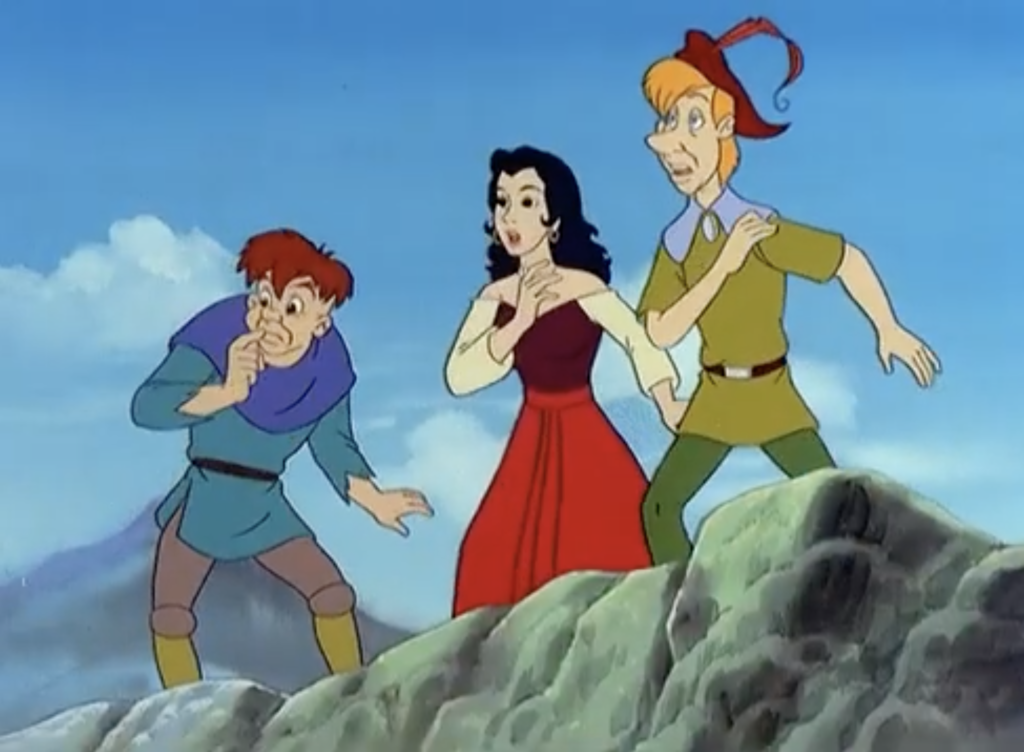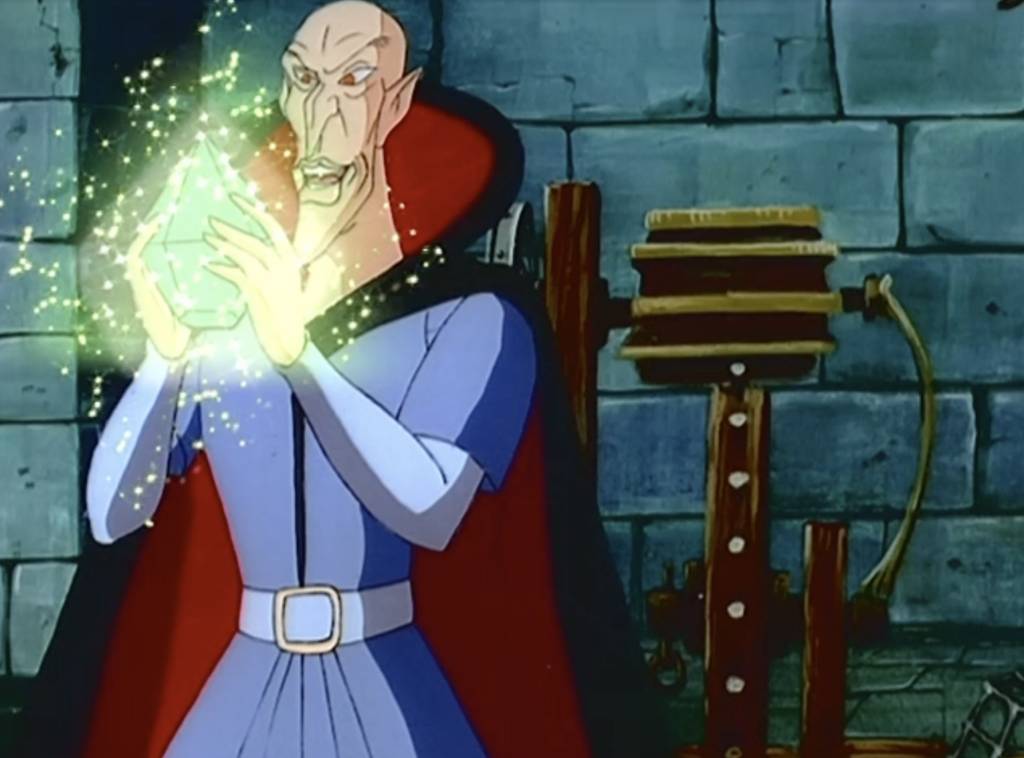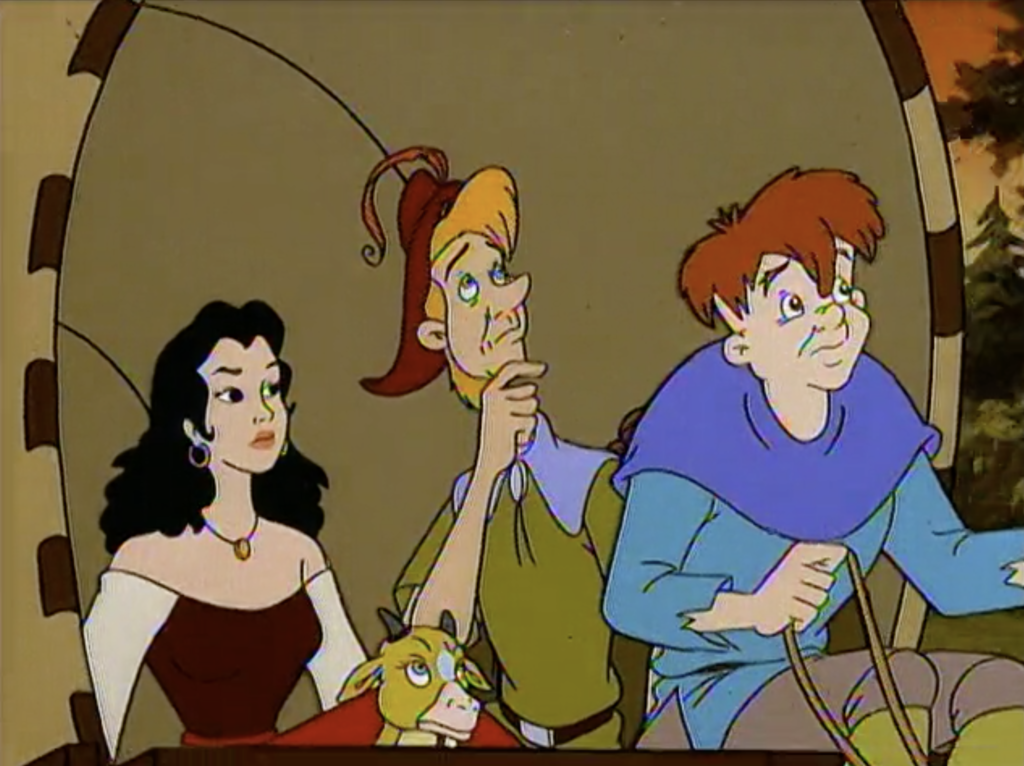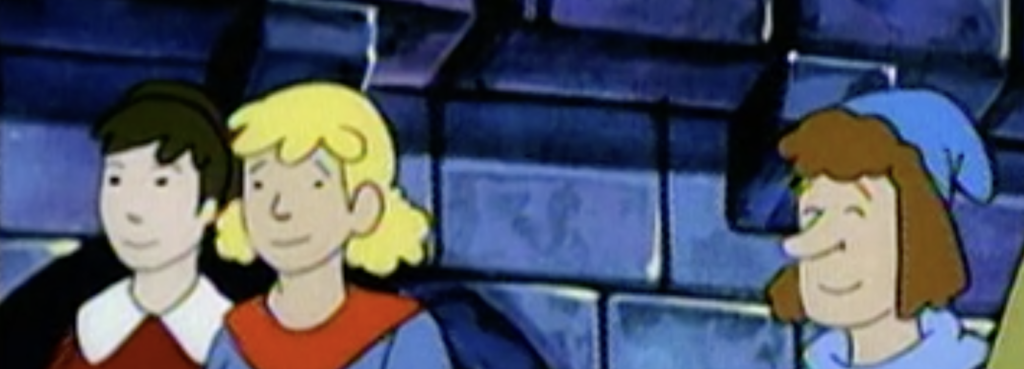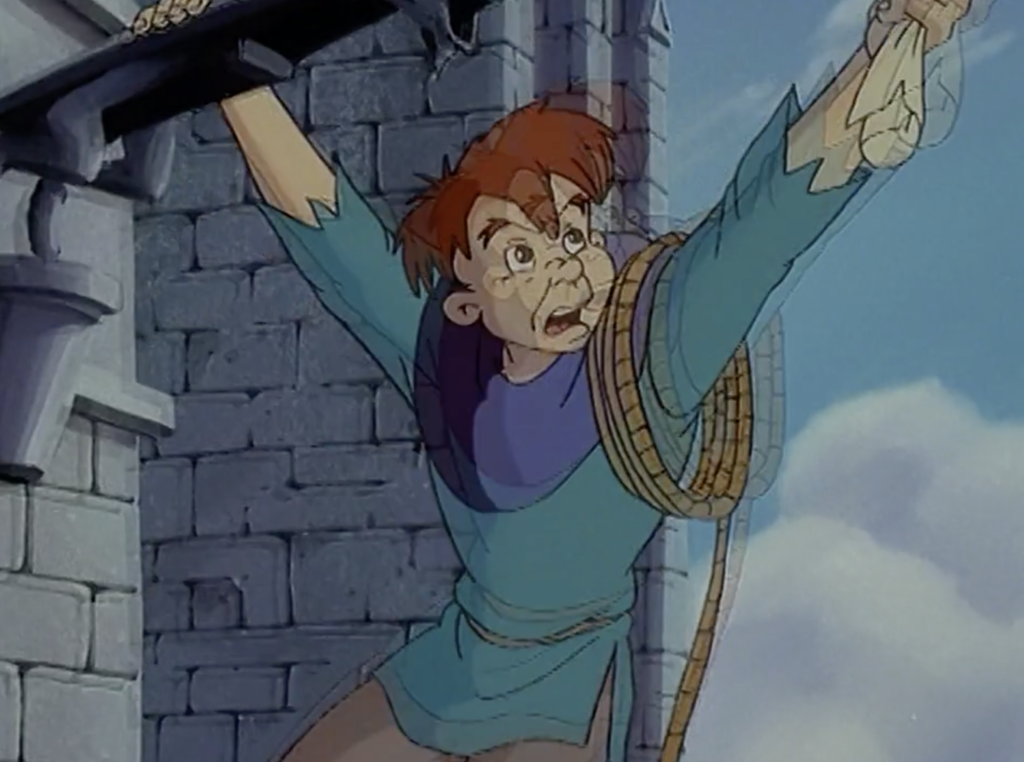We’re discussing the Production Values in this post.
Production Values refers to the technical merits of a production. So in terms of animation, it would mean the character design, background design, the style and the quality of animation, music, voice acting, etc.
The Magical Adventures of Quasimodo was produced by Arès Films, CinéGroupe, Télé-Images, and Astral Media. CinéGroupe and Astral Media are Canadian companies while Arès Films and Télé-Images are French companies. Arès Films, CinéGroupe and Télé-Images were on the animation production side of the industry while Astral Media was a media conglomerate.
Perhaps if you grew up with shows produced by these companies you would be more familiar with them and their “notable” shows/films. According to their wiki, CinéGroupe’s most notable productions were The Kids from Room 402, What’s with Andy?, and Pig City. Of those three, The Kids from Room 402 rings a bells for me but I’m not 100% sure if I recall it. They also did the sequel to Heavy Metal, Heavy Metal 2000 but for me that just name recognition. As for Télé-Images, they did Highlander: The Animated Series and again that sounds vaguely familiar to me but I could just be remembering the name of the older show and not the animated show.
What does all the mean for The Magical Adventures of Quasimodo? All it really means is that the studios who produced it did not have widespread cultural reach. Not saying they were not known in their own countries or not successful, they were just not titans of industry. Which is fine.
However production can not happen without financing. According to the credits the financial participants were with Telefilm Canada, the Government of Quebec, and Centre National de la Cinématograohie (France.) All of these are state-funded agencies.
I do not know what the production budget was for The Magical Adventures of Quasimodo. I couldn’t find any info. It might be behind the paywall of imdbpro. However considering the show was financed either fully or in-part by public-funded agencies, I would wildly speculate that the budget for The Magical Adventures of Quasimodo wasn’t exorbitant but it doesn’t appear to be shoe-string either. It was 26 episodes which are mostly consistently produced across the board. In looking through the credits it appears that the animation was not outsourced to a cheaper studio to do in-between frames, which I think is a fairly typical practice. Not outsourcing would have impacted the over-all budget.
I do think that there was a couple hundred grand spent on this show which means a modest to average budget for a 26 episode show which also includes the writing, editing, pre-production etc. There is nothing about the production values that were overtly awful but also nothing amazing. The story and the over-all concept are more “interesting” than the character designs/ setting but again they are fine, very serviceable with getting the point and characters across to the viewer.
I think it would be easy to wave this show off as just another kid’s show from the mid-90s and therefore it just par-for-the-course that it was so averagely produced. But there were quite a few kids shows at the time that were pushing the envelope in terms of stories and animation that it would be disingenuous to those productions. However though shows probably had more of a budget and/or name recognition behind the production.
On a scale of Disney’s Hunchback to the Dingo Production, Magical Adventures falls somewhere is towards middle of the spectrum. It’s not a total trash piece but it’s by no means an example of the art of animation. However I doubt the production behind The Magical Adventures of Quasimodo was trying to be anything more than a semi-decent animated TV show of the mid-90s. It’s average in its scope of its production values and I think that was the goal.
Animation: C-
Backgrounds: C-
Character Design: C-
Music: C
Voice Acting: B-
(My opinions)
Also I just want to mention that show’s quality of the animation that is available on streaming sites is at disadvantage. This due to the conversion process to covert film to digital which means there are frame-rate issues resulting in frame blending, rainbowing, and artifacts. The show is free so I don’t think much effort was put into the conversion other that to get it in a digital format. So any moments that MIGHT have had good fluid animation, like action scenes, suffer a bit. But at least it is available to watch and not lost to time.
Follow thehunchblog
